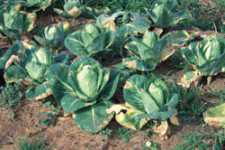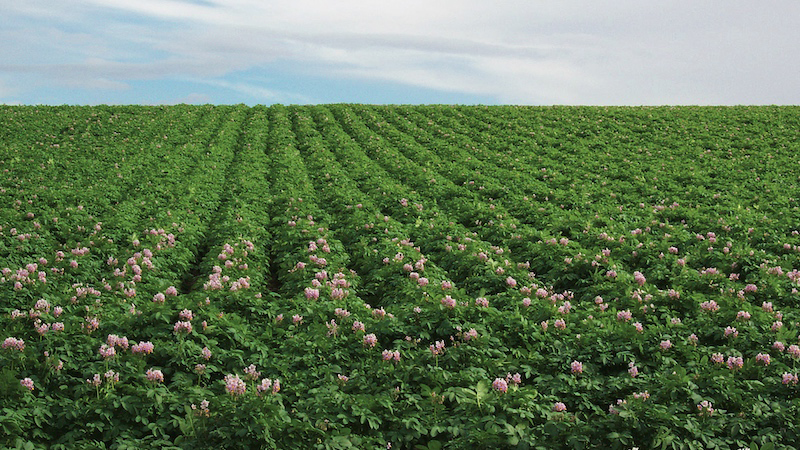Pest Of The Month: Black Rot

Identification
Crop loss because of black rot is not a rare occurrence in Florida. In the field, the disease is easily recognized by the presence of large yellow V-shaped areas extending inward from the margin of a leaf, and by black veins in the infected area. Usually only a few of the outer leaves are involved.
Survival And Spread
The bacterium, which causes black rot, enters the plant through mechanical injury occurring during the pulling and setting of transplants, and the growing of plants in the field. Wounds made to the root system during transplanting are ideal points of entry. Black rot bacteria also may enter plants through natural plant openings, such as hydathodes and stomates, particularly when plants have been subjected to heavy rains or irrigation. If infection occurs in seedlings, the disease is usually more severe as the disease becomes systemic in the plant. These plants remain stunted and the veins in the stems are black. The heads from these plants deteriorate rapidly after harvest.
Management Methods
Black rot can be controlled by using an integrated control program. The control of this disease is based on sanitation. There are no commercially acceptable varieties resistant to the disease at this time. Spraying with copper fungicides may help reduce spread but are not recommended as copper sprays cause black spots on foliage.
The following steps will help reduce losses from black rot:
– Rotate fields.
– Do not put greenhouse transplant sites within ¼ mile of production fields.
– Eliminate wild or volunteer crucifers near the transplant houses and production fields.
– Purchase certified disease-free seed.
– Use only hot water treated seed.
– Make sure your transplant growers carry out protection measures such as inspections, seed treatments, and seed assays.
– Irrigate from well water.
– Do not wet down transplants prior to transplanting or dip plants to wash soil from roots.
– Before using where crucifers are grown, clean equipment of all soil and decontaminate them.
– Plow down cruciferous fields immediately after harvest to incorporate debris and speed decomposition.
– Wait for plants to dry before working a field to reduce spread.










